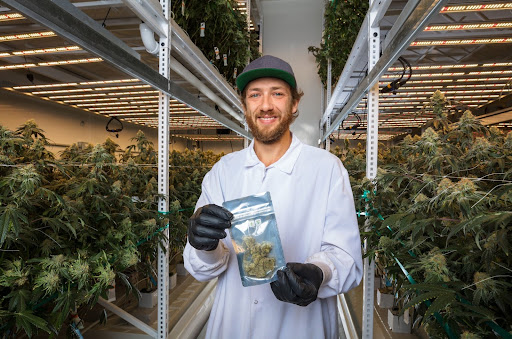
As cannabis is legalized in more and more states, the question often comes up: Why is weed so much stronger in 2023 than it was in the 1970s? Many older folks today who also used cannabis as young adults have noted a major difference in their experiences with weed from the ‘70s vs now– and the science seems to back them up.

How Much Stronger is Weed Nowadays?
Since cannabis was named a Schedule 1 drug in 1970, the Natural Center for Natural Products Research at the University of Mississippi’s School of Pharmacy has been testing cannabis samples confiscated in federal raids throughout the past 5 decades. The tests found that today’s weed is up to 57-67% more potent when compared to samples from the 70s!
One variable that may have affected their data is that many of the samples tested by the Natural Center for Natural Products Research were analyzed months or years after harvest. Since THC content degrades over time (particularly if exposed to air, heat, or light) it is likely that older samples are significantly less potent than they were 50 years ago. However, even taking that into account, the discrepancy in THC levels between weed from the 70s vs now is so vast that there’s little dispute– weed is far stronger than it used to be.
The strength of a strain can be defined in various ways– many of which are subjective and relative to individual experience. For the purposes of aforementioned study (and throughout this blog), strength/potency is defined as percentage of THC content. But taking into account the additional cannabinoids, terpenes, and the holistic entourage effect would paint a more comprehensive picture.
Why is Weed so Strong Now?
What has caused an increase in pot potency? The reasoning for this is complex, but the main factors are: importation vs. domestically-grown flower, expanded understanding of the plant, and advances in cultivation techniques. Read on to learn more about each of these contributing factors to today’s mighty marijuana!

Importation vs. Domestically-Grown Flower
Let’s look back on the hippie heyday of weed: the 1970s. In the seventies, the majority of cannabis in the United States was imported illegally from source countries– in particular, Colombia. Cannabis came in kilo bricks by boat, trucks, and cargo planes. This brick weed was often full of seeds and stems and very dried out by the time it reached the US.
The process of compressing cannabis into bricks made it a lot easier to transport, but also stripped it of a ton of trichomes, flavor, and general quality. Bricks of weed were processed poorly, prioritizing quantity over quality, then endured a long journey– often exposed to air, heat, and light along the way. This caused degradation of the THC and other cannabinoids, decreasing potency.
Today, most of the USA’s supply of cannabis is domestically grown under strict conditions and processed and packaged quickly and efficiently. This preserves the cannabinoids, terpenes, and other effects-boosting components of whole cannabis.
Expanded Understanding of Cannabis
Another reason why weed is so much more potent these days is that we have a much deeper understanding of the chemical makeup of the plant and how best to utilize it. In the 70s, much of the weed that was available was leaves, stems, seeds, and flowers. Very little of the brick was actually the feminized flower (sinsemilla) that we are accustomed to now.
Sinsemilla is the best source of cannabinoids in the plant, and is what you’ll find in nearly every distribution center today. Essentially, folks in the 70s were not actually smoking the parts of the plant that had the highest THC content. Today, that is the majority of what is available on the market.
As our knowledge of cannabis began to increase, so did the quality. Not only because we came to expect better product, but because we developed better and better methods for cultivation, processing, and consumption.

Advances in Cultivation Techniques
In the 1980s, hydroponic growing systems became increasingly popular, causing imports to slow and leading to the invention of hybridized strains which were grown domestically. This resulted in fresher, stronger flower, and the beginning of a shift toward high quality, connoisseur-level strains.
Research shows that potency has been steadily growing since the mid-1990s. In the early 2000s, there was another big jump in potency as awareness increased and agricultural techniques improved. Brick weed was still available and pervasive throughout the 90s, but lost nearly all relevance by 2010.
Just in the last 20 years, the quality of cannabis has increased exponentially. In 2000, around 3% of cannabis came from the potent sinsemilla flower, but by 2010 this number had jumped to 60%! There is no doubt that we will continue to see increases in cannabis quality and potency as time goes on.
The Best of Today’s Strong Cannabis Products
We are so happy to be living in the renaissance of cannabis, a time where we continue to push boundaries and explore all that this incredible plant has to offer. Today, cannabis is more potent than ever– and also more responsibly regulated and safer than ever! And the variety of cannabis products on the market today means there is truly something for everyone.
Timber Cannabis Co. carries all of the best modern cannabis products. Whether you’re seeking potent flower, pre-rolls, edibles, vapes, concentrates, topicals, tinctures, or any other premium weed product, Timber’s got it– at a reasonable price.
Shop online with Timber for in-store pickup today!


